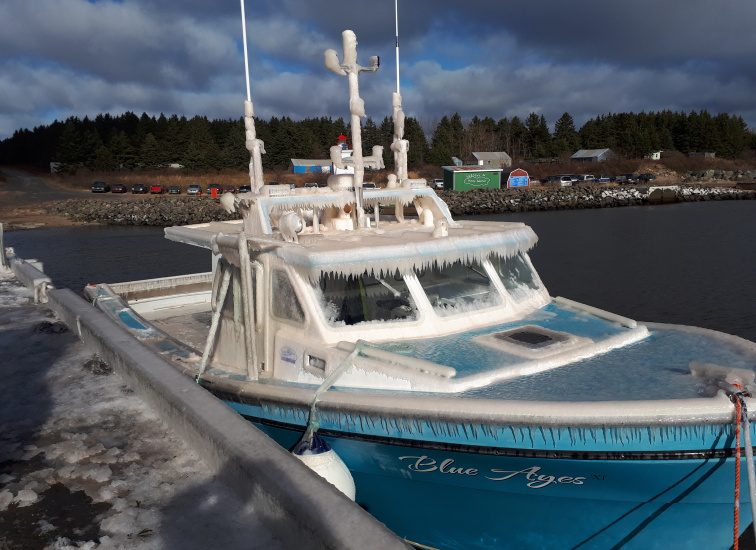
To the Honorable Catherine McKenna, minister of Environment and Climate Change,
The legislation you and the Liberal government introduced last year, Bill C-69, which has passed the House of Commons and is currently with the Canadian Senate, contains important new measures to strengthen environmental protection and Indigenous participation.
The current new treatment facility proposal and associated environmental assessment submitted by Northern Pulp would have triggered a Federal Assessment under this new Act. The proposal includes a pipeline direct into the Northumberland Strait to dispose of an estimated 62 to 90 million liters of ‘treated’ effluent per day.
Yet on March 5, the Prime Minister suggested the environmental assessment was within the provincial jurisdiction.
The ‘triggers’ that would have directed Northern Pulp’s Environmental Approval submission to be subjected to a federal assessment relate to health, social, economic, and gender-based impacts and long-term impacts on Indigenous peoples.
This includes the health of the people potentially affected, directly or indirectly, through the consumption of contaminated seafood, air emissions (specifically PM 2.5), mental health, deleterious substances, etc.
Northern Pulps proposal includes burying the effluent pipe beneath the seabed for its entire length of 4.1 kilometers.
As the seabed of the Northumberland Strait and Caribou Harbour are federal crown land it is subject to requirements under section 67 of Canadian Environmental Assessment Act (CEAA).
Section 67, which is pertinent to the Northern Pulp proposal, states as follows:
…..an authority must not carry out a project on federal lands, or exercise any power or perform any duty or function conferred on it under any Act of Parliament other than this Act that could permit a project to be carried out, in whole or in part, on federal lands, unless:
(a) The authority determines that the carrying out of the project is not likely to cause significant adverse environmental effects; or
(b) The authority determines that the carrying out of the project is likely to cause significant adverse environmental effects and the Governor in Council decides that those effects are justified in the circumstances under subsection 69(3).’
Based on the current CEAA 2012, this project is therefore subject to review by a federal authority in order to determine whether the carrying out of the project will cause significant adverse effects on the surrounding environment, or if any potential significant adverse effects are justifiable.
Why then have you failed to announce a federal assessment?
Also note, approximately 20% of the Canadian Senate, the government of Prince Edward Island, a working group of 3000 fishermen including residents of Pictou Landing First Nation, all the local MLAs, as well as thousands of concerned citizens, including several local physicians, are all requesting a federal assessment.
The new legislation the Liberal Government and you yourself introduced would have triggered an automatic federal assessment; and the current Act, also requires a federal assessment.
Why the delay? You must be aware of the conflict of interest our provincial government has, as the government is both the funder and regulator of the new effluent treatment facility. Our provincial government remains liable for damages caused by this effluent, including the inevitable damage this new effluent treatment proposal will cause.
The damages to Boat Harbour, as well as the western section of the Pictou Harbour, impounded by the Pictou Causeway, (built to encourage the mill to come here), will amount to many hundreds of millions of dollars.
This project will negatively affect fisheries not just in Nova Scotia, but also in New Brunswick and P.E.I., and could potentially amount to billions of dollars in damages.
If Northern Pulp is so confident in their new treatment facility, would it consider assuming the risk and associated cost to compensate the fishermen of three provinces, in the event the effluent causes the damage that fishermen expect it will?
Looking forward to your response,
John Collins, Loch Broom, N.S.
John Collins is a commercial fisherman who fishes out of Caribou Harbour.
With a special thanks to our generous donors who make publication of the Nova Scotia Advocate possible.
Subscribe to the Nova Scotia Advocate weekly digest and never miss an article again. It’s free!




It’s doubtful that we can expect any help from the federal government.
I tried to get help a few years ago when AIS was going to receive the fracking wastewater, process it and dump it into the Minas Basin. I was in contact with our MP, Scott Armstrong, at the time. He sent me an email and said, “Although the federal government develops the laws governing pollution, it is the province that administers the various Environmental Acts.”
PEI premier Wade MacLauchlan tried to get federal support for an environmental assessment of Northern Pulp. Martin said federal officials from the Department of Fisheries and Oceans and Environment and Climate Change Canada told her last year that Ottawa had no intention of stepping in.
Likewise, Lenora Zann tried to get federal support for the Alton Gas project. Last December, a spokeswoman for the federal Environment Department, Veronica Petro, said the department could not speculate about the compliance of a facility not yet in operation. Zann said she wasn’t surprised to learn that federal officials have had little to say.
An article I posted on my website in May, 2015 titled ‘Nova Scotia Ignoring Environmental Protection’ shows Krystyn Tully of EcoWatch explain it this way:
“For the last thirty years, Canada was a rule-of-law kind of country. Our environmental laws spelled out what you can’t do (for example, pollute or block a river). They spelled out how decisions had to be made (for example, major projects were reviewed by independent panels, with input from qualified experts). Those who wanted to develop or dump on the water had to prove to a decision-maker that their actions would not harm other people’s abilities to safely swim, drink or fish those same waters. With a few notable exceptions, the federal rules were generally the same across Canada.
“This is no longer true. When yet another omnibus budget bill passed through Parliament this week, it ushered in a new era in Canadian history. The Navigable Waters Protection Act no longer protects water. The Fisheries Act no longer protects fish. The Environmental Assessment Act no longer requires environmental assessments be done before important decisions are made. If you’re looking at federal environmental laws and policies to protect Canada’s environment, you’re a dinosaur. A throwback. A relic of the 20th century.
“No need to worry,” the federal government says, “the provinces will protect you now.”
**************************
It’s starting to look like we won’t get federal support for any environmental issues in Nova Scotia. Margaret Miller and maybe the rest of Stephen McNeil’s Liberal party, are all we have to work with. We need to find a way to work with them to have these issues addressed and handled better.
Hi Steve,
Thanks for the input and comment. Seems you’ve had quite a bit of experience dealing with the environment department and aren’t optimistic! Understandably. I think there is hope and have had discussions with our federal MLA Sean Fraser, as well with the CEAA in Halifax, and thankfully they remain an independent body. There are a number of other sections in the CEAA that pertain to this being directed for federal review including:
Environmental Effects (Section 5)
Biophysical Effects: any changes to the environment occurring on federal lands that are caused by the project are covered (see definition of “environment” in section 2 of CEAA 2012), as per subparagraph 5(1)(b)(i). Environmental effects
(1) For the purposes of this Act, the environmental effects that are to be taken into account in relation to an act or thing, a physical activity, a designated project or a project are:
b) a change that may be caused to the environment that would occur
(c) with respect to aboriginal peoples, an effect occurring in Canada of any change that may be caused to the environment on
(i) health and socio-economic conditions,
(ii) physical and cultural heritage,
(iii) the current use of lands and resources for traditional purposes
i) on federal lands
Schedule 2 – 4
Physical Activities (Northern Pulps minimum diversion is 22.6 million cubic meters of water per year)
6 The construction, operation, decommissioning and abandonment of a new structure for the diversion of 10 000 000 m3/year or more of water from a natural water body into another natural water body.
……The CEAA is a Federal Act and I remain optimistic as if the recommendation is made to Minister McKenna, I understand it would then go to a federal assessment. Perhaps I’m naive, but I feel confident that if it doesn’t happen through due process, I firmly believe the Supreme Court would ensure a federal assessment was implemented.
Thanks again,
John Collins